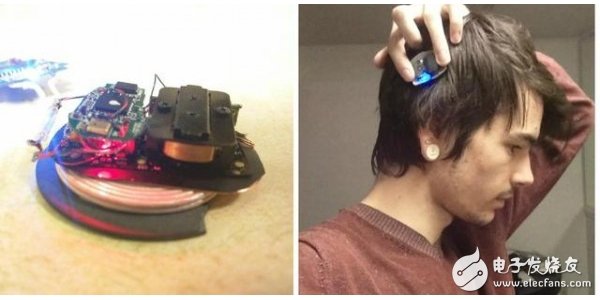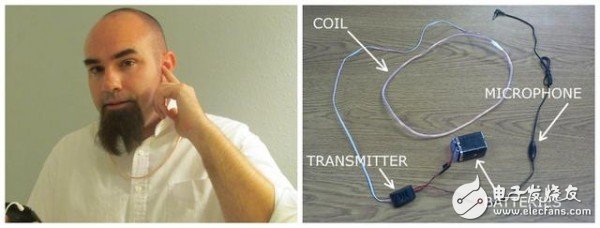When Uncle Colin dismantled the head signal chip, many people may have been shocked by these technologies. But this is just a chip. What if the entire phone is implanted in the head? According to foreign media Mic, a geek named Ben Engel in the United States has an idea about future mobile technology, which is to implant the phone into the head. Engel might realize this idea in a few weeks - putting a Bluetooth headset under the head skin. Bone conduction technique First of all, how does this idea work? Engel will embed this earphone device 4 inches (about 10 cm) in the upper part of his ear. Using the sound of the sound is the principle of solid sound transmission. The sound of the earphone speaker will cause the vibration of the skull, which will arouse the hearing. The same microphone is also used. In the process of speaking, the pronunciation causes the skull to vibrate to transmit sound, and the switch to initiate the call is operated by the magnetic device implanted in the finger. This is the so-called bone conduction technology. In fact, 35 years ago, companies such as Baha have used bone conduction technology to develop hearing aids. Key Kawamura, founder of Studio Banana Things, said: "Medology has proven that bone conduction technology does not harm health." According to Engel, all he needs is a device casing to avoid rusting and infection of the components under the skin. After testing, Engel said that if the outer casing is more elastic, the sound transmission effect is better, because the elasticity is not good, it will inhibit the movement of the device sensor. It is said that it is an implanted phone. In essence, it is enough to implant a headset that can complete the call, so you can still hold it on the big screen iPhone. This headset device is equivalent to a third-party accessory. Because, you can't really put a thing that will be eliminated in a year or two into your head? And the volume is slightly larger. How to achieve it? According to reports, this implant project will be "handled" by registered nurse Jeffrey TIbbett. Shadowless lights, power seats, TIbbett's studio looks like a surgical room, but he doesn't think it's an operation. "I'm just a body-remodeling artist." In addition, TIbbett has no anesthesiologists, think it's scary. . When TIbbett introduced this "art of human transformation," he said that he would use a skin opener to cut open the skin, then pry open the muscle fascia, make room and then stuff it in. Tibbett also admits that if it was just a tiny piece of glass, he had successfully implanted it before, but the size of the device is much larger, and the head space is a big problem. Ultimate goal: brain computer In Engel's view, using implanted devices to answer and make calls is only the first step toward its ambitious goals. Engel said he hopes to use such devices to receive data from the Internet in the future - and hope that the brain can translate these sound waves into meaningful information to help users understand the dynamics on the Internet in real time. In terms of human realization, Tibbett said: "The ideal situation is to let the device interact directly with the nervous system. Implanting the brain computer interface is our ultimate goal, but it is not yet possible, which requires a process." The bending and forming of the metal plate is carried out on the bending machine. Place the workpiece to be formed on the bending machine, lift the brake shoe with the lifting lever, slide the workpiece to the proper position, and then lower the brake shoe to the workpiece to be formed, and realize the bending of the metal by applying force to the bending lever of the bending machine. Sheet Metal,Forming Mount Unit,Laser Cutting Cover,Sheet Metal Forming Process Dongguan Formal Precision Metal Parts Co,. Ltd , https://www.formalmetal.com

